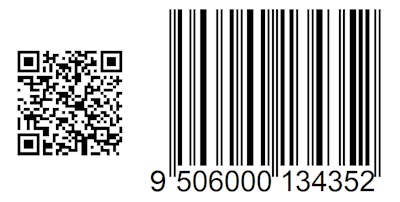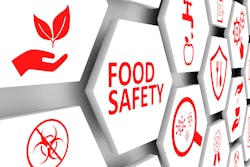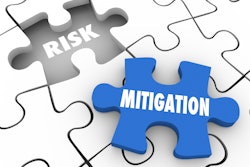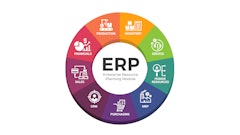
Food safety regulations are rapidly evolving to protect public health and address consumer concerns. In 2024 alone, U.S. consumers experienced a sharp rise in hospitalizations and deaths linked to food recalls. Contamination, mislabeling, and undeclared allergens all contribute to the rise of recalls. Consumers are also scrutinizing synthetic additives like Red Dye No. 3, which has been linked to cancer in lab studies.
In response, the FDA has rolled out critical regulations that require the food and beverage industry to better address food safety for consumers. Most recently, the FDA decided to revoke the authorization of Red Dye No. 3 in food and ingested drugs, mandating the removal of the synthetic dye from products by 2027 along with updated product labels that reflect the dye removal. This decision aligns with other broader food safety regulations that are reshaping America’s food systems, including the FDA’s Food Safety Modernization Act (FSMA). Specifically, FSMA Rule 204 requires those who manufacture, process, pack, or hold foods on the Food Traceability List (FTL) to maintain detailed records of key tracking events that can be shared with the FDA in 24 hours, ensuring swift responses to contamination events and recalls. With the understanding that industry needs more time to meet FSMA 204 requirements, the FDA has extended the compliance deadline by 30 months to 2028, allowing companies to work toward needed changes and through pilot efforts.
Many food and beverage companies lack the necessary infrastructure, supply chain visibility and product labeling to meet these evolving standards and deadlines. Outdated, manual processes pose compliance risks, slow down updates, and undermine consumer trust. Now, brands have an opportunity to modernize supply chain traceability and even food labeling to stay ahead. Two-dimensional (2D) barcodes, such as QR codes with GS1 Digital Link that connect a physical product to the web are emerging as a transformative tool.
The challenge: Labeling lags and compliance gaps
With major compliance deadlines approaching, companies must act fast. Removing Red Dye No. 3 is just one piece of the puzzle, ensuring timely, accurate label updates is equally critical. Yet, current food labeling processes take six to eight months, hindered by regulatory reviews, packaging lead times, and fragmented supply chains.
Many brands still rely on static, outdated labeling methods with product data stored in spreadsheets or disconnected systems that require manual updates for each label across multiple packaging formats. Human errors and mistakes, such as incorrect ingredient listings or formatting inconsistencies, can lead to delays, mislabeling risks, and compliance issues. Once a new label is printed, it must undergo multiple verification rounds- including ingredient changes, regulatory approvals, and packaging redesigns. These fragmented processes slow down and fail to accommodate real-time updates, create inconsistencies across supply chain partners, and increase the risk of outdated labels remaining in circulation.
This lack of centralized, real-time label and data management creates significant challenges in responding to regulatory changes like the Red Dye No. 3 ban where accurate ingredient disclosures are essential and FSMA Rule 204 , which seeks to enhance traceability.
To meet these new compliance demands, brands have an opportunity to adopt a dynamic labeling approach that enables real-time updates and greater visibility across the supply chain and that can be shared with consumers.
The solution: Smarter labels, safer food; The 2D barcode advantage
2D barcodes offer a dynamic, scalable approach to product information sharing and traceability by bridging the gap between static labeling and real-time data accessibility. Unlike traditional one-dimensional (1D) barcodes like the Universal Product Code (UPC), which is scanned at point of sale mainly for price lookup, 2D barcodes can store and communicate brand-authorized, essential product details in real time while supporting regulatory compliance, safety, and consumer trust, including:
- Real-time ingredient lists and allergen disclosures
- Expiration dates and batch numbers
- Recall alerts (e.g., Red Dye No. 3 inclusion)
- Traceability data throughout the supply chain
These capabilities empower brands, retailers, and consumers to navigate regulatory changes and make purchasing decisions with greater efficiency and confidence. Here’s how:
1. Real-time information and updates
2D barcodes allow brands to update ingredient information instantly without requiring costly and time-consuming packaging reprints. For example, if a product reformulates to remove Red Dye No. 3, consumers and retailers can access the most up-to-date information by scanning the 2D barcode with a smartphone or point-of-sale system.
Importantly, this does not replace or override required on-package labeling for nutrients, allergens, or other regulatory disclosures. Instead, 2D barcodes serve as a dynamic extension of the physical label, offering a richer layer of context and transparency that evolves with the product.
This heightened level of traceability and real-time data access also supports FSMA Rule 204 by helping brands maintain a reliable record of a product’s chain of custody, ensuring that high-risk foods, like those on the FTL, can be quickly identified and recalled if needed.
2. Real-time updates = more consumer trust
Consumer confidence hinges on accurate, transparent labeling. 2D barcodes can provide consumers with quick web access to product information such as verified ingredient lists, allergens, and sourcing details. The GS1 Digital Link standard connects a product's unique identity to online sources of real-time information that brands can control. This increased transparency allows brands to build loyalty while reassuring consumers about product safety in alignment with their growing demand for clear, trustworthy information.
3. Improved supply chain visibility and recall readiness
Ensuring seamless supply chain coordination is just as crucial for meeting regulatory requirements as it is for enhancing food safety. By enhancing supply chain visibility and enabling retailers and distributors to track formulation updates, 2D barcodes help ensure that potentially contaminated products are swiftly removed from shelves. Additionally, in the event of a recall, 2D barcodes can assist in faster and more accurate identification and retrieval of tainted products, helping minimize disruptions and safeguard public health.
Industry collaboration
The transition to 2D barcodes is gaining momentum across the industry. GS1 US is facilitating the transition with brands and retailers, to support the shift to this next-generation barcode through its Sunrise 2027 initiative. By 2027, industry has committed to processing 2D barcodes at the point of sale, ensuring a more transparent and efficient food labeling ecosystem. However, the traditional UPC barcode will still coexist on packaging during this transition period.
To implement 2D barcodes effectively, brands should assess their current labeling systems and packaging workflows to identify gaps in barcode management and data-sharing processes. This includes evaluating printing capabilities, data accuracy, and supply chain integration to ensure a smooth transition. 2D barcodes enables interoperability across different platforms, ensuring that product data remains structured, accessible, and can be updated for regulatory agencies, retailers, and consumers alike.
Brands should engage key stakeholders, conduct pilot testing with retailers to ensure they can properly scan and ingest 2D barcode data, and establish a long-term data strategy to maximize the benefits of 2D barcodes. The most advanced companies are thinking about how 2D can be used for multiple purposes, from consumer engagement to supply chain data sharing.
The future of food labeling
The FDA’s ban on Red Dye No. 3 and FSMA Rule 204 signal a broader shift toward greater transparency and accountability in food safety that we can expect to continue. As brands work towards meeting these compliance deadlines, 2D barcodes present not only a possible solution, but a broader opportunity to enhance consumer trust, supply chain visibility, and overall food safety.

















